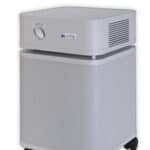Secondhand smoke is also called environmental tobacco smoke. Secondhand smoke is the combination of 2 forms of smoke from smoking tobacco – Sidestream smoke and Mainstream smoke. When someone in your household does smoke, it quite hard to avoid the secondhand smoke. Even when that person smoke outside, as soon as he/she enters the home, the secondhand smell will be present.
Sidestream smoke is the smoke from the burning end of a cigarette, pipe, or cigar.
Mainstream smoke is the smoke exhaled by a smoker. The tobacco will keep burning even when it is not smoked because of chemicals.
Secondhand smoke, also known as environmental tobacco smoke, remains a pervasive health concern despite increased awareness of its dangers. Comprising two distinct forms of smoke—sidestream and mainstream—its insidious presence poses risks not only to active smokers but also to those who inadvertently inhale it. Understanding the composition and consequences of secondhand smoke is crucial in combating its harmful effects on public health.
Sidestream Smoke: The Invisible Threat
Sidestream smoke arises from the burning end of a cigarette, pipe, or cigar. Unlike mainstream smoke, which is exhaled by the smoker, sidestream smoke contains higher concentrations of toxic compounds such as carbon monoxide, ammonia, and benzene. Due to its origin, sidestream smoke often goes unnoticed but poses a significant risk to individuals in its vicinity, especially in enclosed spaces with poor ventilation.
Studies have shown that sidestream smoke contains even more harmful substances than the smoke directly inhaled by smokers. The smaller particles in sidestream smoke can penetrate deeper into the lungs, increasing the likelihood of respiratory issues, cardiovascular diseases, and even cancer among nonsmokers. Children, pregnant women, and individuals with preexisting health conditions are particularly vulnerable to the adverse effects of sidestream smoke exposure.
Mainstream Smoke: The Exhaled Hazard
Mainstream smoke, on the other hand, is the smoke exhaled by the smoker. While it may seem less harmful than sidestream smoke, mainstream smoke still contains a cocktail of carcinogens and toxins. The act of smoking introduces thousands of chemicals into the air, many of which are known to cause serious health problem over time.
Moreover, the misconception that mainstream smoke is less harmful than sidestream smoke can lead to complacency regarding the risks of secondhand smoke exposure. Individuals may underestimate the dangers of being in proximity to a smoker, unaware that they are inhaling harmful substances that can linger in the environment long after the smoking session has ended.
Table of Contents
Why Is Tobacco Smoke a Problem?
Don’t underestimated the potency of secondhand smoke. It can be the silent assailant lurking in the air we breathe. Contain staggering array of chemicals, many of which are toxic and carcinogenic, it poses grave risks to both passive smokers and innocent bystanders. Understanding the perilous composition of secondhand smoke is imperative in comprehending its far-reaching impact on public health.
Chemical Cocktail: Unveiling the Danger
Secondhand smoke harbors an alarming cocktail of over 7,000 chemicals, each with its own potential for harm. Among these are trace quantities of insidious poisons such as formaldehyde, arsenic, DDT, and cyanide. Shockingly, more than 250 of these chemicals are known to be poisonous, with at least 70 recognized as carcinogens—agents capable of initiating cancerous growths in living tissue.
The insidious nature of secondhand smoke lies not only in its composition but also in its ability to infiltrate environments, permeating indoor spaces and exposing unsuspecting individuals to its toxic fumes. From homes to workplaces, no setting is immune to the pervasive threat posed by secondhand smoke.
Health Impacts: Unveiling the Toll
The consequences of exposure to secondhand smoke are manifold, encompassing a spectrum of debilitating health conditions. Chief among these are heart disease and lung cancer, with nonsmokers exposed to secondhand smoke facing an elevated risk of developing these life-threatening illnesses.
For individuals with preexisting respiratory conditions such as asthma, exposure to secondhand smoke can exacerbate symptoms, leading to wheezing, coughing, and increased susceptibility to bronchitis and pneumonia. The detrimental effects extend beyond physical health, with pregnant women particularly vulnerable to complications arising from exposure to secondhand smoke.
Available On Amazon TopAdd To Cart 
Austin Air Prime Add To Cart 
Clarity Marketing USA LLC PrimeEligible Add To Cart 
LEVOIT PrimeEligible Add To Cart 
TPLMB PrimeEligible
Where Is Secondhand Smoke a Problem?
Secondhand smoke is not just a concern in designated smoking areas or in the vicinity of active smokers. Its pervasive nature infiltrates various environments, posing health risks to individuals who are exposed to it. Whether at home, work, in public places, or even within the confines of a vehicle, secondhand smoke presents a significant threat to the well-being of nonsmokers. Understanding the extent of its reach is crucial in implementing effective measures to mitigate its adverse effects.
Public Places:
Public places such as parks, restaurants, bars, and sidewalks can become arenas for secondhand smoke exposure. Despite regulations in many regions restricting smoking in such areas, enforcement may vary, leaving individuals vulnerable to involuntary inhalation of tobacco smoke. The lingering presence of secondhand smoke in these environments can compromise the health of everyone.
Workplace:
Workspaces can also harbor the dangers of secondhand smoke, particularly in industries where smoking is prevalent or where designated smoking areas are inadequately ventilated. Employees who work in such environments face prolonged exposure to harmful toxins, increasing their risk of developing respiratory ailments, cardiovascular diseases, and other health complications.
Home:
Perhaps one of the most overlooked settings for secondhand smoke exposure is the home. Despite being perceived as a haven, homes where smoking occurs—whether by residents or visitors—pose significant risks to the health of inhabitants. Children, in particular, are vulnerable to the detrimental effects of secondhand smoke, with exposure increasing their susceptibility to respiratory infections, asthma, and even sudden infant death syndrome (SIDS). Maintaining a smoke-free home environment is paramount in safeguarding the health and well-being of family members, guests, and pets alike.
Vehicles:
Even the confines of a vehicle are not immune to the dangers of secondhand smoke. Smoking inside cars can result in the accumulation of toxic particulate matter, creating a hazardous environment for both drivers and passengers. Studies have shown that concentrations of harmful pollutants in the confined space of a vehicle can far exceed safe levels, posing immediate and long-term health risks to all occupants.
Protecting Against Secondhand Smoke:
Given the pervasive nature of secondhand smoke, proactive measures must be taken to minimize exposure and mitigate its adverse effects. Implementing comprehensive smoke-free policies in public spaces, workplaces, and vehicles is essential in creating environments that prioritize the health and well-being of all individuals. Additionally, promoting awareness of the dangers of secondhand smoke and providing support for smoking cessation efforts can contribute to reducing overall exposure levels.
What Can Be Done Regarding Secondhand Smoke?
- Quit smoking if you are not already a non-smoker. I have an excellent guide for you, with a 98% success rate. –> I want to quit! Or smoke e-cigarettes instead.
- Do not allow anyone to smoke anywhere in or near your home.
- Do not permit anyone to smoke in your car, even with the windows down.
- Choose restaurants and other places that do not allow smoking.
- Teach your children to stay away from secondhand smoke.
- If you can’t avoid smoke in your home (smoking neighbors) or at work (smoking colleagues), you can use an air purifier. It will help you to get rid of the smoke.
 In my opinion, the best smoke air purifier is an Austin air allergy machine.
In my opinion, the best smoke air purifier is an Austin air allergy machine.
Superior Purification Capability
When it comes to purifying the air, the Austin Air Allergy Machine excels. Equipped with an advanced filtration system, it efficiently removes a wide range of pollutants, leaving your indoor environment fresh and clean. Whether it’s dust, pollen, tobacco smoke, chemical vapors, gases, viruses, or bacteria, this air purifier tackles them all with remarkable efficiency. Its comprehensive purification ensures that even the tiniest of particles are eliminated, providing you with pristine air to breathe.
360° Air Intake for Maximum Efficiency
Unlike conventional air purifiers that only draw air from one direction, the Austin Air Allergy Machine features a 360° intake system. This innovative design allows the device to capture pollutants from all angles, maximizing its efficiency. As a result, you can trust that every corner of your room will be thoroughly cleansed, leaving no space untouched by its purifying prowess.
Convenience at Your Fingertips
Another aspect that makes the Austin Air Allergy Machine the top choice is its user-friendly features. With built-in casters, moving the device from one room to another is a breeze, offering unparalleled convenience. Additionally, the air purifier comes in a variety of colors, allowing you to choose one that complements your home decor seamlessly. Its low-maintenance design and long filter life further add to its appeal, sparing you the hassle of frequent upkeep.
If you are tight on a budget, look at air purifiers for smoke under $100.


